When I travel, I enjoy visiting open air markets and love to check out the produce and spices. What's available in the market reflects the food culture and traditions of the country. I also like to get a feeling for the people as they go about their daily shopping.
When I was in Italy in the summer time, I became intrigued by these fresh borlotti beans. They were so colorful, and I'd never seen fresh beans in their pod before. When I took a cooking class in Italy, the teacher Alessandra was so kind and incorporated the fresh beans into the menu for me.
First my kids shelled the borlotti beans. Then, Alessandra showed us how to make this delicious crispy bean recipe. They are so good- soft on the inside and crispy on the outside. The recipe won over my kids. Even my kid who doesn't eat beans enjoyed this dish.
Back in Los Angeles, I was happy to find similar beans at J.R. Organics at the farmers market.
I have made these beans several times at home as a winter side dish. The recipe comes out equally well with fresh beans or with dried beans. Every time I taste this crispy bean dish, I am reminded of my trip to Italy along with all the amazing food we ate and the lovely people we met.
Recipe
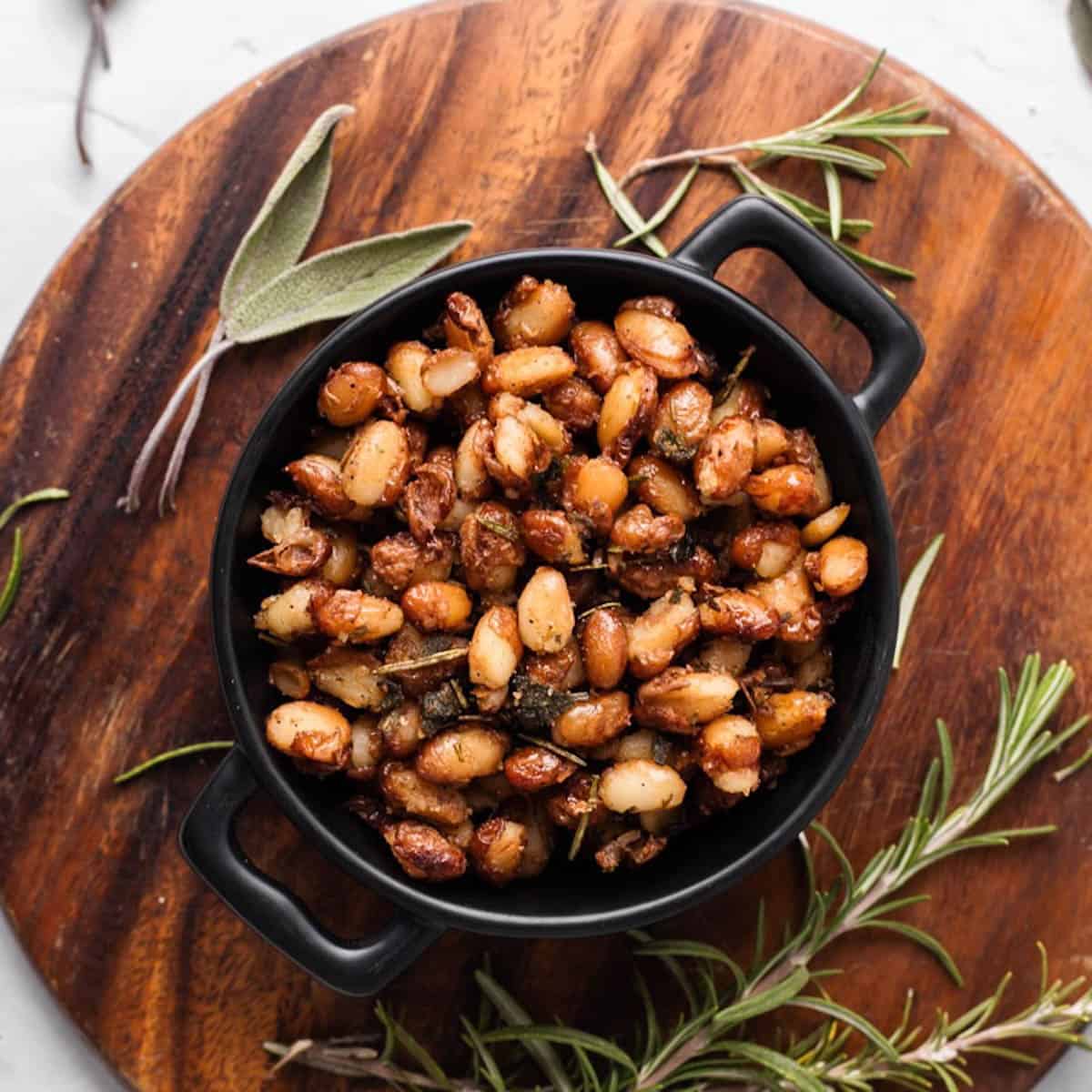
Crispy Cranberry Beans Recipe
Equipment
- Skillet
Ingredients
- 1 cup dried Italian Borlotti or cranberry beans or 1 pound of fresh beans in their pods then shelled
- 4 cups water approximately
- 1 ¼ teaspoons salt divided
- 2 scant tablespoons finely chopped fresh mixed herbs about 1 handful of freshly picked herbs (Like rosemary, sage, mint, and thyme)
- 1 clove garlic minced
- 3 tablespoons extra virgin olive oil
- several grinds freshly cracked black pepper
Instructions
- Sort and rinse beans. Place beans and water in a pot and bring to a boil. Make sure there is enough water to cover the beans. Turn the heat lower, cover with the lid ajar, and simmer, stirring occasionally. About half way through cooking, stir in ½ teaspoon salt (about 30-40 minutes into the cooking for dried beans or about 20-25 minutes for fresh). If necessary, add more water as you cook so that the beans remain covered by water. Simmer beans until soft and creamy, about 1 hour 15 minutes for dried beans (or about 45 minutes for fresh beans). The time varies depending on the specific batch of beans. Check several different beans for doneness before turning off the stove; sometimes not all the beans are ready at once. Drain. Discard bean water or save for another use if desired. The beans turn light brown in color once cooked.
- Select a large, ovenproof saute pan. Sauté chopped herbs and minced garlic in olive oil over medium heat for about 5 minutes, stirring often. Preheat the oven to 450° F (230°C).
- When the beans are soft, add them to the pan, and toss them with the herb mixture, ¾ teaspoon of salt, and pepper. Spread out the beans in a flat, even layer. At this point, you can refrigerate the beans and finish the dish later. Or complete the dish now and serve.
- Place the beans in the oven for about 10 minutes. Then stir, add a tiny bit more oil if needed, and put back in the oven for 5 minutes more or until the beans are crisp on the outside and soft on the inside. Place the beans under the broiler for 2 minutes if needed for extra crispness. Serve warm.
Notes
- Substitute for cannellini beans, lima beans, pinto beans or navy beans.
- For a shortcut, use canned beans. Drain, rinse, and pat dry before roasting.
- These beans are best when enjoyed right out of the oven. Store in an airtight container in the refrigerator for up to 3 days. Re-crisp them in the oven to serve again. If they look dry, add a little more olive oil before reheating.
- Cooked beans will freeze well, but the crispy beans do not.
- Cooking time will depend on if you’re using fresh or dried beans. Fresh Borlotti beans will cook in 45 minutes, while dried beans will need about an hour and 15 minutes.
Nutrition
Nutritional Disclaimer
Nutritional information is an estimation only.

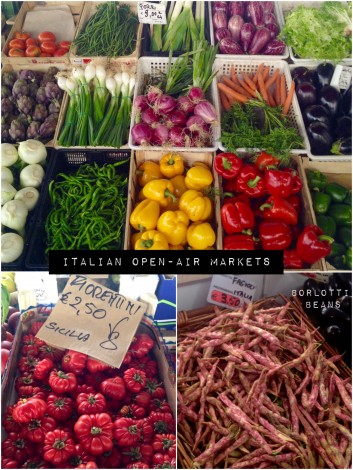

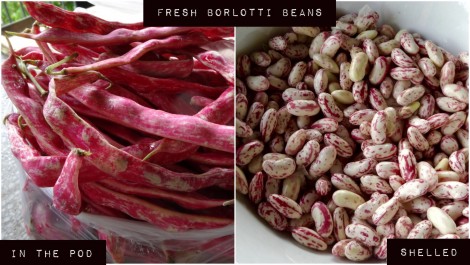
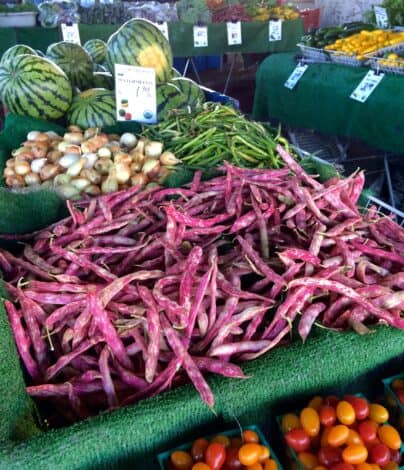
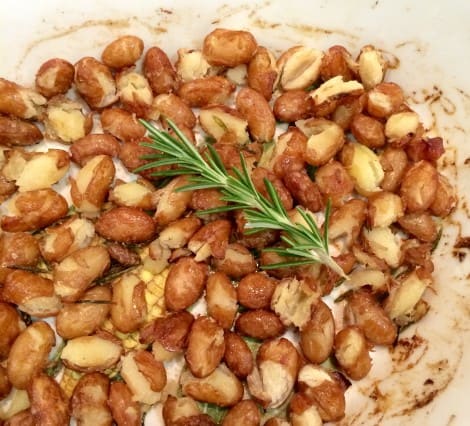


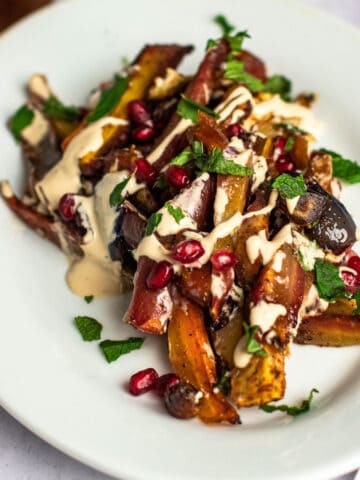
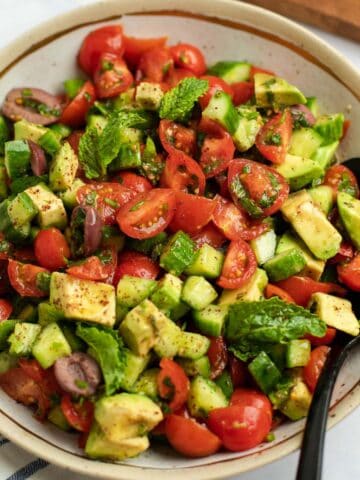
motherwouldknow says
What an absolutely splendid and unusual way to make beans. I can't wait to try this. I've never used cranberry beans - this would be a fabulous way to try them out.
Dana @ Foodie Goes Healthy says
Thanks. Glad you like the recipe. It's very similar to roasting chickpeas, which has become a popular recipe.
ShePaused4Thought says
I am going to look for these beans at my Farmer's Market. I love trying new things, especially when they have been inspired by travel.
Dana @ Foodie Goes Healthy says
Hi Cathy- keep an eye out for fresh beans in the pod when you are at the farmers market-- they are seasonal, so they don't always have them. Also, some farmers use beans as a rotational crop-- they primarily use a patch of land for one of their primary crops, then once in a while they plant beans instead to help give the soil a rest and to improve the nutrients in the soil. Apparently, beans are well-suited for this purpose. Thus, some farmers only grow beans sporadically. I grab fresh beans when I see them. In addition, this recipe can be made with dried beans instead.